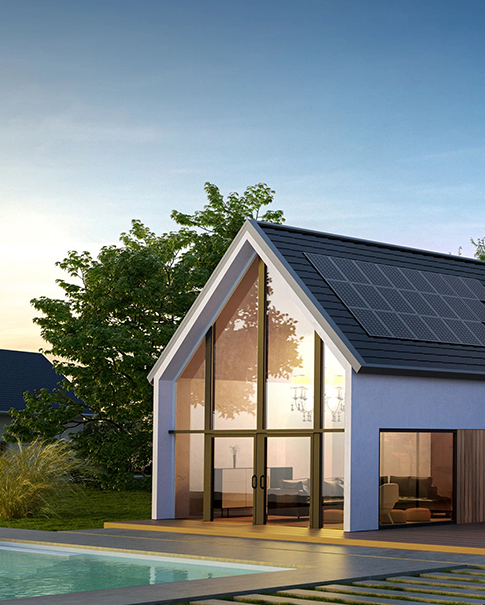Various Applications of Grid Tie Micro Inverter
Mar 27, 2024
Inverters convert power from solar panels into usable electricity. Single-phase micro inverters are commonly used in residential and small commercial environments. Grid-tie micro inverters have emerged as a revolutionary technology in the field of renewable energy. These compact devices enable the seamless integration of solar panels or other renewable energy sources with the electrical grid. By converting DC power generated by these sources into AC power synchronized with the grid, grid-tie micro inverters offer numerous advantages over traditional string inverters, and widely used in life.
Residential Applications:
Grid-tie micro inverters have gained significant popularity in residential settings due to their flexibility and ease of installation. Homeowners can now effortlessly harness the power of solar energy by connecting micro inverter-equipped solar panels directly to the residential grid. This simplifies the installation process, minimizes the risk of power loss, and ensures optimal energy generation. Additionally, with microinverters, each panel operates independently, maximizing overall system efficiency even in partially shaded or complex roof configurations.
Commercial Installations:
Grid-tie micro inverters have found extensive use in commercial buildings, allowing businesses to meet their energy needs in an eco-friendly manner. With distributed architecture, these micro inverters optimize the performance of each individual solar panel, resulting in higher energy yields across the entire array. The ability to monitor the performance of each panel enables better maintenance and fault detection, ensuring seamless operation and reducing system downtime. Furthermore, the modular nature of micro inverters simplifies system expansions and allows for flexible scaling as energy demands change over time.
Public Infrastructure:
Grid-tie micro inverters have also made their mark in powering public infrastructure projects. Streetlights, parking lots, and public transportation systems can benefit from the installation of solar panels equipped with micro inverters. By tapping into the sun's energy, these systems reduce dependence on the electrical grid, minimize operational costs, and contribute to a greener and more sustainable environment. The scalability of micro inverters makes them suitable for projects of varying sizes, ensuring efficient energy generation at both small and large-scale infrastructure sites.
Educational Institutions:
Educational institutions are increasingly embracing grid-tie micro inverters to promote sustainable practices and educate students about renewable energy. Installing micro inverter-based solar systems on campuses not only reduces carbon emissions but also serves as a tangible teaching tool. Students can monitor and analyze the energy production data in real-time, fostering a deeper understanding of clean energy technologies and their impact. Additionally, micro inverters enhance the safety of these installations by eliminating the high DC voltages associated with traditional string inverters.
Remote and Off-Grid Applications:
Even in remote areas where access to the grid is limited or non-existent, grid-tie micro inverters shine as a viable solution for off-grid power systems. These micro inverters facilitate the integration of renewable energy sources like solar or wind with energy storage systems, allowing for a reliable and autonomous power supply. Whether used in rural communities or for powering remote monitoring stations, micro inverters offer a cost-effective and efficient alternative to traditional grid-dependent systems.
Grid-tie micro inverters have gained significant traction across various application fields, providing efficient and reliable solutions for integrating renewable energy sources into the electrical grid. From residential rooftops to commercial installations and public infrastructure projects, these compact devices empower individuals, businesses, and communities to embrace sustainable practices and reduce their carbon footprint. As we continue to transition towards a cleaner energy future, grid-tie micro inverters will play a pivotal role in realizing our renewable energy goals.
